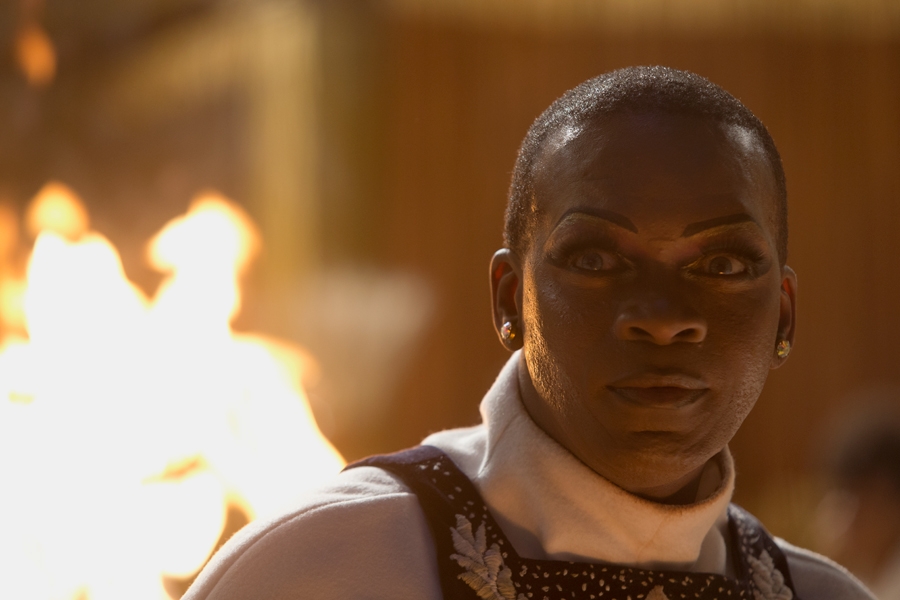In her second solo exhibition at Petzel Gallery, Israeli Yael Bartana explores two types of identity – national and religious. The show consists of two irrelevant photographic works, one neon light installation that reads ‘Black Stars Shed No Light’ and two films, Inferno (2013) and True Finn (2014). These last two are the only works that warrant any attention. Unfortunately, the questions they raise are ones that anyone with a halfway decent education has probably already considered, rendering them more entertaining than critical.
In True Finn, which is the former name of Finland’s ethnic nationalist Finns Party, eight citizens gather for a week in a remote cabin to discuss the question, ‘Who is a true Finn?’ To the viewer, it looks less like an actual summit and more like a Christopher Guest mockumentary. Footage of the subjects – who include Mustafe, a Muslim man born in Somalia, Tiina, a Roma woman wearing Gypsy garb, and Komugi, a deadpan Japanese woman – is sutured together with grainy imagery of reindeer and people sitting in saunas, pitting the ‘new’ Finland against the old. Intelligent discussions of national identity are undercut by ridiculous workshops that include creating a new Finnish flag, jumping together on an imaginary trampoline and electing a ‘True Finn’ from the group – an honour that subverts the former name of the country’s ethnic nationalist party. That title goes to the dark-skinned Mustafe, because the group generally agrees that he is a good friend and makes good conversation. In other words, modern Finnish identity is based not on appearance or shared history, but on good vibes.
Religious identity is explored in Inferno, a 22-minute video that follows a joyous bunch of gorgeous young Brazilians, all clad in white gauze outfits and Carmen Miranda headresses, who make a pilgrimage to the Temple of Solomon in São Paulo. In the temple, they encounter an evil drag queen with kohl-rimmed eyes – a high priest in this scenario. They all make the Roc-A-Fella diamond sign in front of a gilded replica of the Ark of the Covenant, and then the floor opens up beneath them, dragging some worshippers into the depths of Hades. Those left alive stagger bloodied out into the city. In some future time, the scene of this tragedy is transformed into a holy site à la the Wailing Wall, drawing parallels with Jerusalem. Bartana calls it a ‘historical pre-enactment’.
Light Internet research reveals that the Brazilian Temple of Solomon is not a fiction but an actual site that houses the congregation of the Universal Church of the Kingdom of God (UCKG), an evangelical church founded in Rio de Janeiro in the 1970s. In recent years, the UCKG has been mired in accusations of money laundering (its founder, Edir Macedo, is estimated to be worth over $1 billion, allegedly from tithes collected from desperately poor members). In creating a mockup of the temple for her set, Bartana superimposes the pageantry of an ancient religion on the site of a modern one and so draws a comparison between Judaism and the UCKG. Really? The transference of symbolism from one belief system to another is older than the alphabet and in this context says nothing about the people who follow them. Inferno is a pretty film for sure, but it has about as much depth as a national anthem.
Read Raimar Stange on Yael Bartana’s parallel exhibition at Captain Petzel, Berlin, from the March 2015 issue.
This article was first published in the March 2015 issue.
